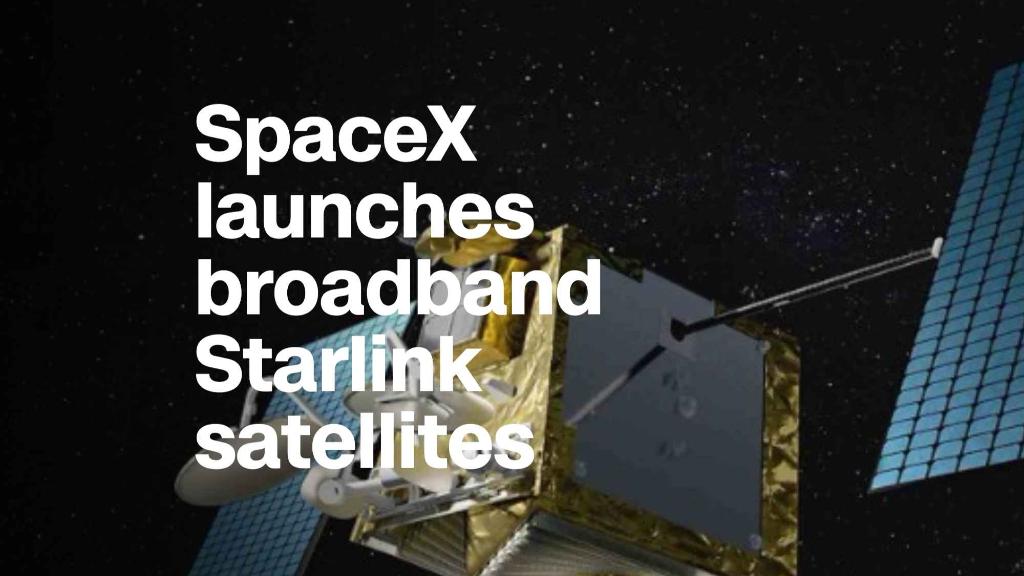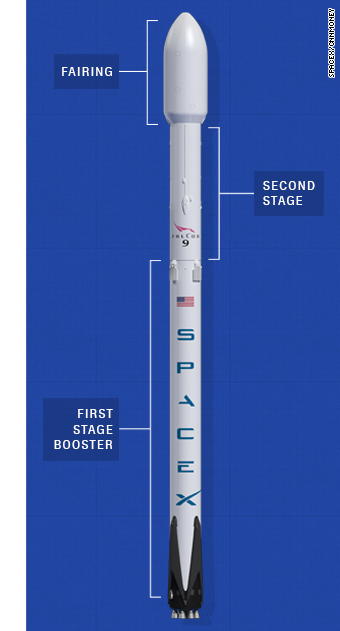
You've heard of SpaceX landing and reusing rockets. But safely recapturing the $6 million nose cone that sits at the tip of the rocket? Yes, that could happen too.
Elon Musk's rocket company is due for another launch Friday at 7:13 am PT from Vandenberg Air Force Base in California. SpaceX will set off one of its Falcon 9 rockets to deliver a group of satellites for communications firm Iridium (IRDM).
Shortly after launch, SpaceX is probably going to make another experimental attempt to guide the rocket's nose cone, also called a payload fairing, onto a passenger ship outfitted with a giant net.
The fairing rests on the very top part of the rocket, and it acts as a shield for satellites during launch. Once the rocket is in space, the fairing splits into two and falls away. Typically, it's left to plummet back to Earth where the ocean becomes its graveyard.

But SpaceX wants to change that, mostly because the fairing on its Falcon 9 costs $6 million.
As Musk once put it, if "you had $6 million in cash on a palette flying through the air, and it's going to smash into the ocean, would you try to recover it? Yes. Yes, you would."
Related: Elon Musk's Mars rocket will fly 'short flights' next year
The company has quietly attempted to recapture the 43-foot-long fairing halves since at least March of 2017.
At least twice, SpaceX has guided fairing halves to soft landings in the ocean, according to Musk's social media pages.
But there's a problem.
"Once it gets into the water, it's quite damaging to the electronics and components inside the fairing," said Glenn Lightsey, a professor of aerospace engineering at Georgia Tech. "Most likely if it gets into the water, it's not usable."
Enter, Mr. Steven.
For Friday's launch a ship, named Mr. Steven, will head out to sea and attempt to catch half of the fairing with a giant net.
Mr. Steven made its public debut last month. Musk said before a February 22 launch that both halves of the Falcon 9 fairing were outfitted with on-board guidance systems and tiny thrusters, which helped guide them back through the Earth's thick atmosphere. Then they deployed parafoils, a type of parachute, which helped slow the fairing halves down as they hurtled back toward Earth.
That recovery attempt wasn't totally successful. Musk said the fairing landed in the water "a few hundred meters" away from Mr. Steven.
SpaceX has not publicly confirmed that it will attempt to land a fairing half on Mr. Steven's net again, but tracking site MarineTraffic shows the ship left the Port of Los Angeles on Thursday. It's heading for a location denoted as "Iridium 5," a nod to the name of Friday's mission. Specific coordinates were not available.
Related: SpaceX launches demo satellites for its high-speed internet project
The odds of Mr. Steven, owned by Louisiana-based company SeaTran, successfully capturing the fairing on Friday probably aren't good.
Lightsey, the aerospace engineering professor, said parafoils can guide objects to fairly precise landings. Skydivers, for example, have used them to land on targets about the size of a football field.
But Mr. Steven's net isn't quite that large. And the fairing will likely face rough winds and other atmospheric forces that can jostle it, Lightsey said.
"It's arguably as challenging or more challenging that landing the [first-stage rocket boosters]," he said.
SpaceX has mastered the ludicrously complex maneuver of guiding a first-stage rocket booster back to Earth. That move involves small thrusters as well, but the rocket booster also has the help of its engines to guide it to a pinpoint landing.
SpaceX will not, however, attempt to land the booster after Friday's launch. The booster has flown once before on an October 2017 mission, and SpaceX will reportedly discard some of its older boosters as it gears up to debut an upgraded version of the Falcon 9, called Block 5.
And the company likely won't air the fairing landing attempt on its live stream, since that effort is experimental.
Taking risks that others may balk at has always been SpaceX's MO. And for the most part, it's paid off.
Thanks to SpaceX's efforts to reuse hardware, its Falcon 9 rocket is drastically cheaper than competing rockets — and the customers keep lining up. The company is on pace to have its busiest year of launches ever.

